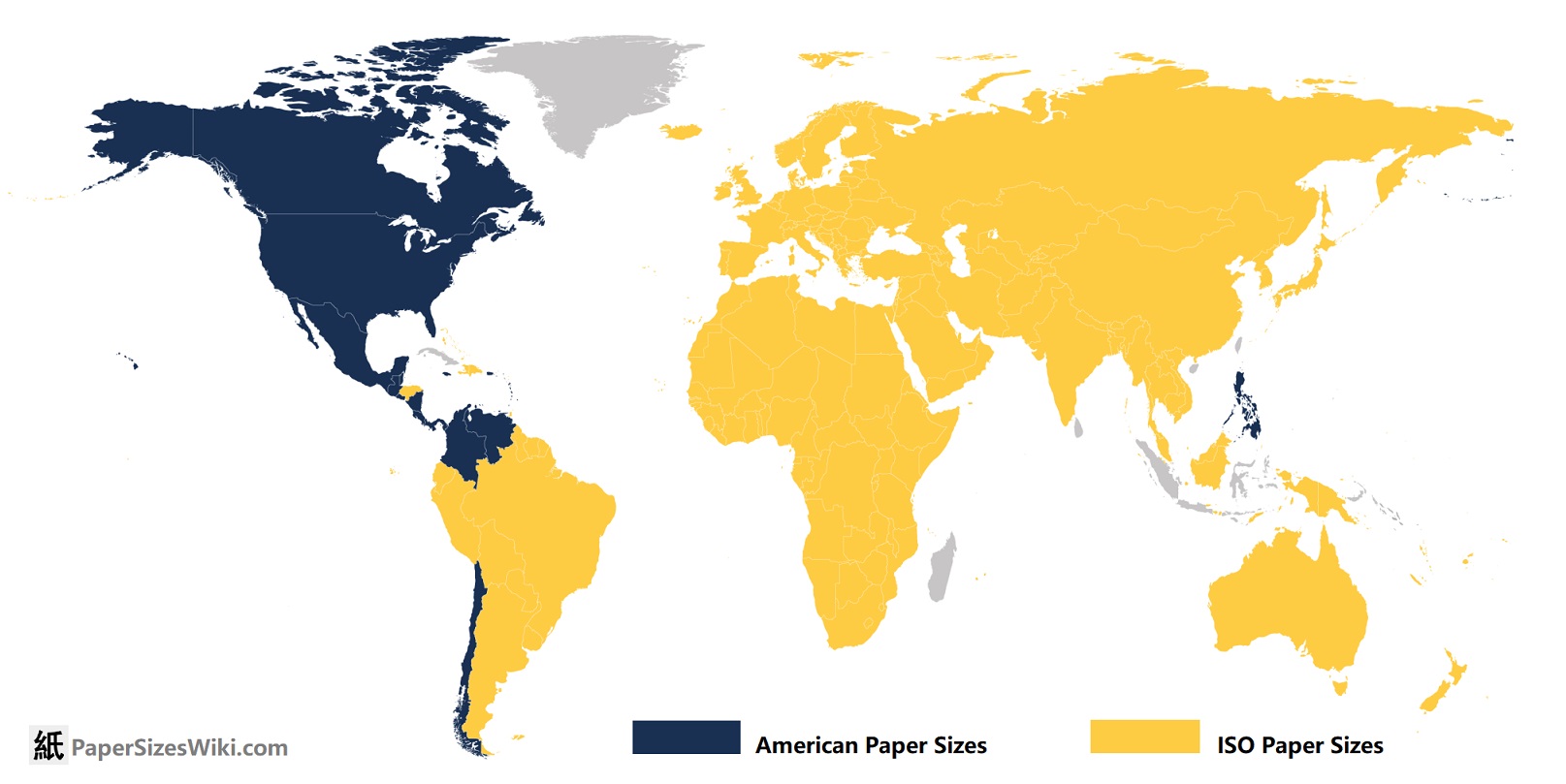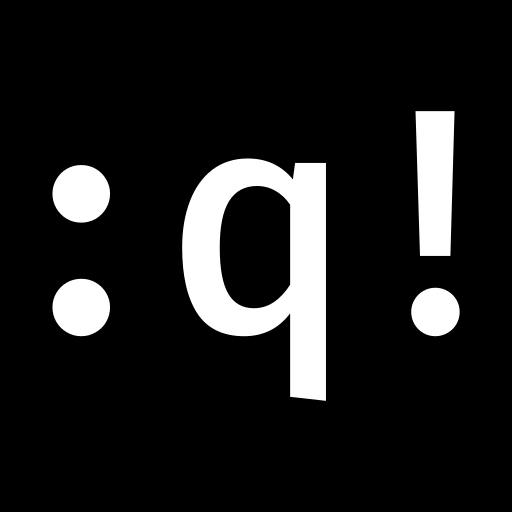There are a couple I have in mind. Like many techies, I am a huge fan of RSS for content distribution and XMPP for federated communication.
The really niche one I like is S-expressions as a data format and configuration in place of json, yaml, toml, etc.
I am a big fan of Plaintext formats, although I wish markdown had a few more features like tables.
I’ll give my usual contribution to RSS feed discourse, which is that, news flash! RSS feeds support video!
It drives me crazy when podcasters are like, “thanks for listening to our audio podcasts. We also have a video feed for our YouTube subscribers.” Just let me have the video in PocketCasts please!
I feel you but i dont think podcasters point to youtube for video feeds because of a supposed limitation of RSS. They do it because of the storage and bandwidth costs of hosting video.
Org-mode is like md but has tables and more. Emacs will even run computation as a party of interpretation. GitHub accepts it in place of markdown.
Would you say it’s worth considering in place of markdown for a non-emacs user? (I am curious to try emacs but I may not get to it anytime soon)
I can’t say that it is, no.
Haha appreciate the honesty :)
I do recommend emacs though. It is not the greatest editor, but it is an amazing experience. It is such an amazing experiment, that has an extensive set of different ways of looking at content and code - it will change how you think about coding.
org-mode is awesome for many reasons, but the similarities/overlap with markdown are an incidental benefit. I wouldn’t learn org-mode for that reason, however there are many other good ones that make it worthwhile. I’ve been using it for years for my own project management, tasks tracking, notes and many other things - it’s one of those rare tools that can do many things incredibly well.
Zigbee or really any Bluetooth alternative.
Bluetooth is a poorly engineered protocol. It jumps around the spectrum while transmitting, which makes it difficult and power intensive for bluetooth receivers to track.
I agree Bluetooth (at least Bluetooth Classic) is not very well designed, but not because of frequency hopping. That improves robustness and I don’t see why it would cost any more power. The hopping pattern is deterministic. Receivers know in advance which frequency to hop to.
This isn’t exactly what you asked, but our URI/URL schema is basically a bunch of missed opportunities, and I wish it was better designed.
Ok so it starts off with the scheme name, which makes sense. http: or ftp: or even tel:
But then it goes into the domain name system, which suffers from the problem that the root, then top level domain, then domain, then progressively smaller subdomains, go right to left. www.example.com requires the system look up the root domain, to see who manages the .com tld, then who owns example.com, then a lookup of the www subdomain. Then, if there needs to be a port number specified, that goes after the domain name, right next to the implied root domain. Then the rest of the URL, by default, goes left to right in decreasing order of significance. It’s just a weird mismatch, and would make a ton more sense if it were all left to right, including the domain name.
Then don’t get me started about how the www subdomain itself no longer makes sense. I get that the system was designed long before HTTP and the WWW took over the internet as basically the default, but if we had known that in advance it would’ve made sense to not try to push www in front of all website domains throughout the 90"s and early 2000’s.
Don’t worry, in 5 or 10 years Google will develop an alternative and the rest of FAANG will back it. It will be super technically correct but will include a cryptographic signature that only big tech companies can issue.
This is actually exactly what I asked for, thank you!!
Then don’t get me started about how the www subdomain itself no longer makes sense. I get that the system was designed long before HTTP and the WWW took over the internet as basically the default, but if we had known that in advance it would’ve made sense to not try to push www in front of all website domains throughout the 90"s and early 2000’s.
I have never understood why you can delegate a subdomain but not the root domain, I doubt it was a technical issue because they added support for it recently via
SVCBrecords (But maybe technical concerns were actually fixed in the decades since)
I like the Doxygen’s implementation and extension of Markdown. Pair it with PlantUML and you have something worth being a standard.
I wish standards were always open access. Not behind a 600 dollar paywall.
When it is paywalled I’m irritated it’s even called a standard.
DP >> HDMI
TOML instead of YAML or JSON for configuration.
YAML is complex and has security concerns most people are not aware of.
JSON works, but the block quoting and indenting is a lot of noise for a simple category key value format.
TOML is not a very good format IMO. It’s fine for very simple config structures, but as soon as you have any level of nesting at all it becomes an unobvious mess. Worse than YAML even.
What is this even?
[[fruits]] name = "apple" [fruits.physical] color = "red" shape = "round" [[fruits.varieties]] name = "red delicious" [[fruits.varieties]] name = "granny smith" [[fruits]] name = "banana" [[fruits.varieties]] name = "plantain"That’s an example from the docs, and I have literally no idea what structure it makes. Compare to the JSON which is far more obvious:
{ "fruits": [ { "name": "apple", "physical": { "color": "red", "shape": "round" }, "varieties": [ { "name": "red delicious" }, { "name": "granny smith" } ] }, { "name": "banana", "varieties": [ { "name": "plantain" } ] } ] }The fact that they have to explain the structure by showing you the corresponding JSON says a lot.
JSON5 is much better IMO. Unfortunately it isn’t as popular and doesn’t have as much ecosystem support.
You’re using a purposely convoluted example from the spec. And I think it shows exactly how TOML is better than JSON for creating config files.
The TOML file is a lot easier to scan than the hopelessly messy json file. The mix of indentation and symbols used in JSON really does not do well in bigger configuration files.
JSON5
Nice. I mostly use Qt JSON and upon reading the spec, I see at least a few things I would want to have out of this, even when using it for machine-machine communication
YAML is complex and has security concerns most people are not aware of.
YAML is racist to Norwegians.
If you have something like
country: NO(NO = Norway), YAML will turn that intocountry: False. Why? Implicit casting. There are a bunch of truthy strings that’ll be cast automagically.What in tarnation
That’s “country-ist”. Nothing to do with the genes of people living over there.
People bitch about YAML but for me it’s still the preferred one just because the others suck more.
TOML like said is fine for simple things but as soon as you get a bit more complex it’s messy and unwieldy. And JSON is fine to operate on but for a config? It’s a mess. It’s harder to type and read for something like a config file.
Heck, I’m not even sold on the S-expressions compared to yaml yet. But then, I deal with so much with all of these formats that I simply still prefer YAML for readability and ease of use (compared to the others.)
ActivityPub :) People spend an incredible amount of time on social media—whether it be Facebook, Instagram, Twitter/X, TikTok, and YouTube—so it’d be nice to liberate that.
I don’t use XMPP but it seems like such a no-brainer
Not matrix? XMPP is a good idea, but the wildly different levels of support among clients cause problems even back in its heyday Matrix solves some of that, fully encrypted, chat history stored on the server in encrypted form, supports gateways to other services.
Honestly I just haven’t looked at Matrix yet. Unfortunately like many of the privacy-centric protocols it’s mostly used by people trying to hide something.
I don’t know much about “mostly”, but check out the channels on the server kde.org, where they do discussions regarding visual design, development, documentation and all that good stuff.
Sometimes, if you mostly find what you don’t like, you might be looking at it from the wrong angle. For instance, I found a few, very desirable communities on Reddit, so much that I am finding it hard to leave. And that is the few that I searched for. Only realised the toxic communities, when I read others’ rants on it [1].
and from the recommendations. Definitely don’t checkout the Reddit recommended communities or you will get said toxic stuff. ↩︎
Thanks!
This is really not accurate. Matrix is not designed to be a super privacy first protocol. It’s like Lemmy in the it’s designed to solve a problem and be a useful federated collaboration tool. It borrows features from a number of popular messaging platforms. Message history is stored on the server but encrypted client side so privacy is preserved. It supports group chat rooms. It supports voice and video. And most importantly, it supports bridges- you can connect your matrix to other services that are completely incompatible with matrix using a bridge. Perhaps the best example of this is Beeper, which is built on matrix. They are trying to replicate the user experience of the old app Trillian- beeper can link with a number of chat services including Google messages, slack, WhatsApp, telegram, signal, etc. Thus you get all your chats in one place.
I feel like I would enjoy Beeper but I just cannot get past the name
What’s wrong with Beeper?
Nothing objectively, it just sounds so stupid to me that I have an irrational aversion lmao
(This is not an insult, I just had a realization that I think might affect you)-- do you know what the name comes from?
Years ago there was a thing called a beeper before everyone had cell phones. It was a one way paging system-- you’d give your friends your beeper number, they’d call it, type in their phone number, and their number (or whatever they dialed in) would appear on your beeper. You’d then use a landline phone to call them back (early versions of the system had no text or reply capability, only numbers and only one-way).
I always thought it was a cool name. But thinking about it I realize someone less than maybe 25-30 years old might literally have never encountered such a device. Much like a 5.25" floppy disk or rotary dial phone, they went out of style years ago and a young person might never have encountered one.
Curious if that’s you?
Those problems you speak of about XMPP are not really a concern anymore and haven’t been for a while.
Matrix on the other hand is very difficult to implement, and currently there’s only one (maybe two?) viable implementation choices. It is way over complicated, resource intensive, and has privacy issues.
Does it have privacy issues compared to XMPP which doesn’t enforce the privacy extensions? I figure they are about the same there. Asking genuinely as I do not know other than Matrix might leak some metadata.
And quite frankly, I really wish we’d just agree on one or the other. Would love to host an instance and move some people to it but both are just stuck in this quasi-half used/half not state. And even people on here can’t agree what should be “standard.”
Xmpp definitely wins in privacy. What is there to privacy more than message content and metadata? Matrix definitely fails the second one, and is E2E still an issue for public groups? I don’t remember if they fixed that.
XMPP being a protocol built for extensibility means it will be hard for it not to keep up with times.
On your point of picking one or the other, I’d say pick the one you like and bridges will help you connect to the other. But XMPP came way before matrix, and I believe they fractured the community instead of building it.
There’s a good reason all the big techs built on top of xmpp (meta, Google, etc). It’s a very good protocol and satisfies modern demands very well.
Xmpp definitely wins in privacy. What is there to privacy more than message content and metadata? Matrix definitely fails the second one, and is E2E still an issue for public groups? I don’t remember if they fixed that.
XMPP being a protocol built for extensibility means it will be hard for it not to keep up with times.
Okay so how does modern XMPP protect this? When I last used XMPP, some (not all) clients supported OTR-IM, a protocol for end to end encryption. And there wasn’t a function for server stored chat history (either encrypted or plaintext).
Have these issues been fixed?
https://cuelang.org/. I deal with a lot of k8s at work, and I’ve grown to hate YAML for complex configuration. The extra guardrails that Cue provides are hugely helpful for large projects.
Oh, this looks great!
I’ve been struggling between customize and helm. Neither seem to make k8s easier to work with.I have to try cuelang now. Something sensible without significant whitespace that confuses editors, variables without templating.
I’ll have to see how it holds up with my projectsOh this! YAML was a terrible choice. And that’s coming from someone who likes Python and prefers white spaces over brackets. YAML never clicked for me.
What you mean you can’t easily tell what this is?
- foo: - - : - bar: baz: [ - - ]
Hmm, what alternative? XML :-)? People hate Grade DSL just for not being xml
Oddly having several variants rather than a standard despite “regular” being in the name: everyone I work with eschews regex but after finally taking the time to learn more than just the basics of it a few years afk I find it so incredibly useful almost daily.
Very much the same. I was terrified of regex, now I love it
What resource did you use to master it? As every time I have to use regex I want to cry.
The term open-standard does not cut it. People should start using “publicly available and sharable” instead (maybe there is a better name for it).
ISO standards for example are technically “open”. But how relevant is that to a curious individual developer when anything you need to implement would require access to multiple “open” standards, each coming with a (monetary) price, with some extra shenanigans [archived] on top.
IEEE standards however are actually truly open, as in publicly available and sharable.
how about FOSS, free and open-source standards /s
why do we call standards open when they require people to pay for access to the documents? to me that does not sound open at all
It’s a historical quirk of the industry. This stuff came around before Open Source Software and the OSI definition was ever a thing.
10BASE5 ethernet was an open standard from the IEEE. If you were implementing it, you were almost certainly an engineer at a hardware manufacturing company that made NICs or hubs or something. If it was $1,000 to purchase the standard, that’s OK, your company buys that as the cost of entering the market. This stuff was well out of reach of amateurs at the time, anyway.
It wasn’t like, say, DECnet, which began as a DEC project for use only in their own systems (but later did open up).
And then you have things like “The Open Group”, which controls X11 and the Unix trademark. They are not particularly open by today’s standards, but they were at the time.
Because non-open ones are not available, even for a price. Unless you buy something bigger than the “standard” itself of course, like a company that is responsible for it or having access to it.
There is also the process of standardization itself, with committees, working groups, public proposals, …etc involved.
Anyway, we can’t backtrack on calling ISO standards and their likes “open” on the global level, hence my suggestion to use more precise language (“publicly available and sharable”) when talking about truly open standards.
ISO 216 paper sizes work like this: https://www.printed.com/blog/paper-size-guide/
It’s so fucking neat and intuitive! How is it not used more???
Also, A4 simply has a better ratio than letter. Letter is too wide, making A4 better to hold and it fits more lines per page.
sorry to tell you this bud…

Clearly the rest of the world are communists! It’s not us, it’s you! I’m not crying you’re crying! 😭😭😭
It’s also worth noting that switching from ANSI to ISO 216 paper would not be a substantial physical undertaking, as the short-side of even-numbered ISO 216 paper (eg A2, A4, A6, etc) is narrower than for ANSI eqjivalents. And for the odd-numbered sizes, I’ve seen Tabloid-size printers in America which generously accommodate A3.
For comparison, the standard “Letter” paper size (aka ANSI A) is 8.5 inches by 11 inches. (note: I’m sticking with American units because I hope Americans read this). Whereas the similar A4 paper size is 8.3 inches by 11.7 inches. Unless you have the rare, oddball printer which takes paper long-edge first, this means all domestic and small-business printers could start printing A4 today.
In fact, for businesses with an excess stock of company-labeled #10 envelopes – a common size of envelope, measuring 4.125 inches by 9.5 inches – a sheet of A4 folded into thirds will still (just barely) fit. Although this would require precision folding, that’s no problem for automated letter mailing systems. Note that the common #9 envelope (3.875 inches by 8.875 inches) used for return envelopes will not fit an A4 sheet folded in thirds. It would be advisable to switch entirely to A series paper and C series envelopes at the same time.
Confusingly, North America has an A-series of envelopes, which bear no relation to the ISO 216 paper series. Fortunately, the overlap is only for the less-common A2, A6, and A7.
TL;DR: bring reams of A4 to the USA and we can use it. And Tabloid-size printers often accept A3.
My printer will print and scan any A side paper. But I can’t even buy A paper! Fucking America
Presumably you could just buy that paper size? They’re pretty similar sizes; printers all support both sizes. I’ve never had an issue printing a US Letter sized PDF (which I assume I have done).
Kind of weird that you guys stick to US Letter when switching would be zero effort. I guess to be fair there aren’t really any practical benefits either.
I’ve literally never even seen A paper in America. Probably would have to special order it from another country
Ah fair enough.
I mean I’d love to use it. Of course America is behind the times of civilized nations.
Unicode editors for notes/todo formats, making markup unnecessary.
Does unicode have bold/italics/underline/headings/tables/…etc.? Isn’t that outside of its intended goal? If not, how is markup unnecessary?
Does unicode have bold/italics/underline/headings/tables/
Yes, and even 𝓈𝓉𝓊𝒻𝒻 𝕝𝕚𝕜𝕖 🅣🅷🅘🆂. And table lines & edges & co. are even already in ASCII.
Isn’t that outside of its intended goal?
🤷<- this emoji has at least 6 color variants and 3 genders.
If not, how is markup unnecessary?
Because the editor could place a 𝗯𝗼𝗹𝗱 instead of a **bold**, which is a best-case-scenario with markdown support btw. And i just had to escspe the stars, which is a problem that native unicode doesn’t pose.
What about people who prefer to type
**bold**rather than type a word, highlight it, and find the Bold option in whichever textbox editor they happen to be using?Which is what i ask for, better (or at all) support for unicode character variations, including soft keyboards.
Imagine, there was a switch for bold, cursive, etc on your phone keyboard, why would you want to type markup?
And nobody would take**bold**away, if you want to write that.I don’t like that approach. Text search won’t find all the different possible Unicode representations.
You always find some excuses, huh? That would be a bug.
Always? That’s my first reply. Bug of what? A flaired character has a different code than a standard one, so your files would be incompatible with any established tools like find or grep.
Would you have to do that for every letter? I suppose a “bold-on/bold-off” character combination would be better/easier, and then you could combine multiple styles without multiplying the number of glyphs by some ridiculous number.
Anyways, because markup is already standardized, mostly. Having both unicode and markup would be a nightmare. More complicated markup (bulleted lists, tables) is simpler than it would be in Unicode. And markup is outside of Unicode’s intended purpose, which is to have a collection of every glyph. Styling is separate from glyphs, and has been for a long time, for good reason. Fonts, bold/italics/underline/strikethrough, color, tables and lists, headings, font size, etc. are simply not something Unicode is designed to handle.
Would you have to do that for every letter? I suppose a “bold-on/bold-off” character combination would be better/easier,
Yeah, had the same thought, edited already.
Alright, but seriously: IPv6.








